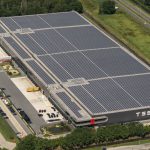
You Don't Need to Live in Africa to Benefit From Solar Energy
Give Solar 360 a call today and let us discuss your solar energy options.
Tanzania, an East African, has been struggling to provide electricity to its residents. Presently, about 2 percent of the country’s rural population have a regular electricity supply, with a large percentage of the rural households depending on fossil fuels like kerosene for lighting and charcoal for domestic cooking.
In order for the country to develop economically and socially, access to regular electricity and modern energy services is essential. In other countries with a similar rural population, an off-grid application like solar energy is now a cost-effective substitute for the expensive expansion of the grid to sparsely populated remote areas.
Off-grid electricity projects can propel Tanzania to a new phase of economic development. In a few isolated parts of the country, some energy systems that rely on hydropower, wind, and solar are being used to provide energy. The integration of these renewable off-grid systems will increase their access to affordable energy.
Tanzania’s 2013 per capita consumption of electricity was a little less than 90 kilowatt-hours. Unfortunately, this is a quarter of the average electricity consumption rate in sub-Saharan Africa, which already has very limited access to electricity. The main challenges faced by Tanzania’s power sector is the increasing demand for electricity in rural areas and the poor performance of the electric utility company.
Off-Grid Projects Will Meet Increasing Rural Electricity Demand
The demand for electricity supply is increasing rapidly in Tanzania, due to a rise in mining activities and the population growth, which has led to greater household consumption. The ministry of Energy estimates that the nation’s per capita consumption of electricity will multiply five times over from 2010 to 2035 when it is expected to be 472 kWh. Presently, Tanzania’s nationwide electrification rate is 11.5 percent. In the rural areas it is a dismal 2 percent while in the cities, it is 40 percent. To close the gap, the central government has set a goal to reach 75% electrification by 2035.
For this goal to be met within the limits of the nation’s budgetary allocation, grid extension may not be feasible for areas that are remote or hard to reach. The World Bank estimates for the extension of the grid is about $19,000 per kilometer in developing countries with dispersed rural population. The most cost effective method to electrify the rural areas is renewable energy.
Tanzania Has a Great Potential for Solar Energy
The country is located in the planet’s “solar belt” along the equator. It receives a large supply of sunlight that ranges from 2,800 to 3,500 hours of intense solar radiation annually. On a daily basis, there is an average of 4 to 7 kWh of radiation per square meter. The greatest amount of sunshine is available in Tanzania’s central region. That is why the government has stopped the collection of value-added tax (VAT) and import duties for major solar power components, to encourage investment in solar power plants.
Tanzania has a perfect environment for the development of both small and large-scale solar energy projects. In particular, off-grid solar systems will provide clean power supply that will meet the increasing needs of the sparsely distributed rural populace.
If you are wanting to slash your bills by at least 50 percent, give Solar 360 a call. We’ll answer all of your questions and get you started down the road to solar power freedom.









